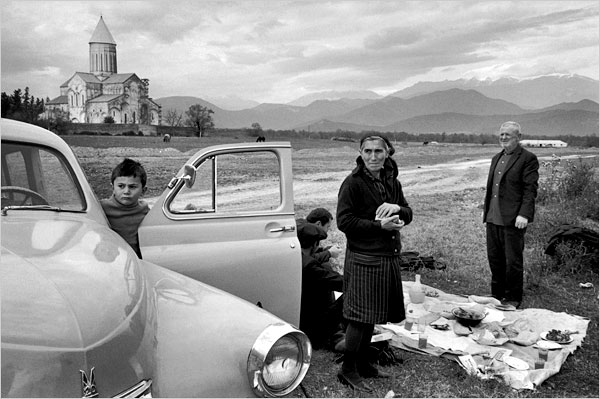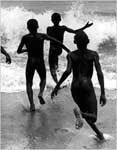
NYT:
In 1932 the young Henri Cartier-Bresson, lately returned from Africa, saw a photograph of African children charging into waves on a beach. “I must say that it is that very photograph which was for me the spark that set fire to fireworks,” he recalled years later. “I couldn’t believe such a thing could be caught with the camera. I said, ‘Damn it,’ took my camera and went out into the street.” What Cartier-Bresson produced during the next few years, as the curator Peter Galassi once wrote, became “one of the great, concentrated episodes in modern art.”
How much the African photograph actually shaped this work is debatable, but it struck a chord. It epitomized the combination of serendipity and joie de vivre that Cartier-Bresson admired: three naked boys, their silhouettes against white spray and sun-drenched water, making a perfect geometry.
The man who shot the picture was Martin Munkacsi. Hungarian-born, a star of Berliner Illustrierte Zeitung, the leading illustrated German newsmagazine, Munkacsi was then one of the most celebrated photojournalists. He reached a pinnacle of fame and fortune in New York later that decade, claiming to be the highest-paid photographer in the world (he was notoriously self-mythologizing), revolutionizing the American fashion magazine under Carmel Snow and Alexey Brodovitch at Harper’s Bazaar.
Here.








